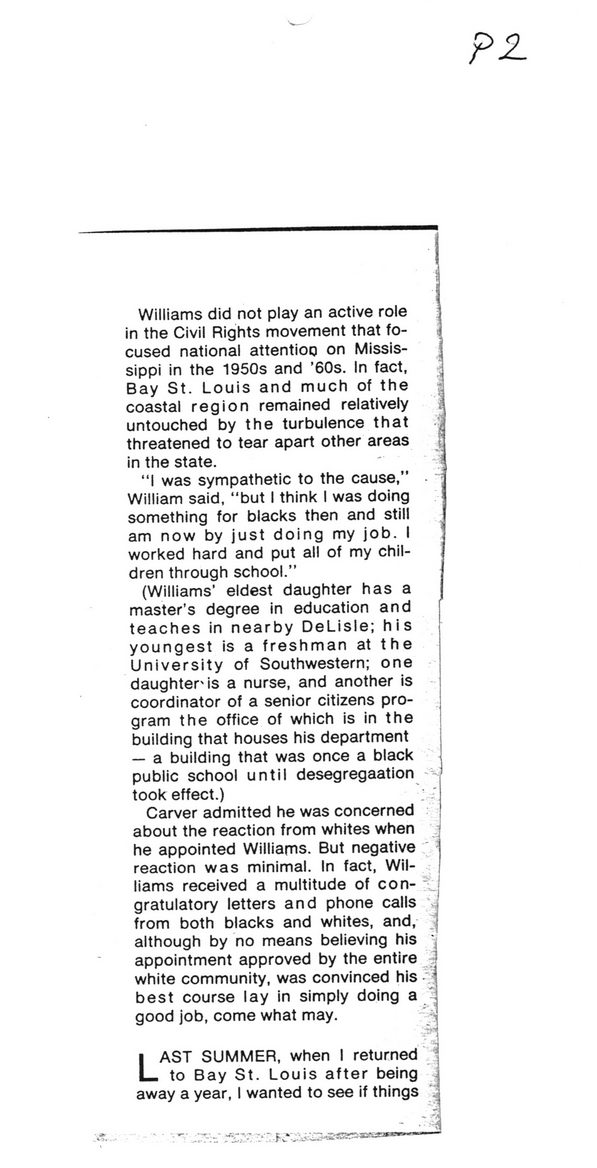This text was obtained via automated optical character recognition.
It has not been edited and may therefore contain several errors.
Williams did not play an active role in the Civil Rights movement that focused national attentiot) on Mississippi in the 1950s and ’60s. In fact, Bay St. Louis and much of the ?, coastal region remained relatively i untouched by the turbulence that j threatened to tear apart other areas j in the state. “I was sympathetic to the cause,” William said, "but I think I was doing something for blacks then and still am now by just doing my job. I worked hard and put all of my children through school.” (Williams’ eldest daughter has a master’s degree in education and f teaches in nearby DeLisle; his youngest is a freshman at the University of Southwestern; one daughter is a nurse, and another is coordinator of a senior citizens program the office of which is in the building that houses his department — a building that was once a black public school until desegregaation took effect.) Carver admitted he was concerned about the reaction from whites when 1 he appointed Williams. But negative 1 reaction was minimal. In fact, Williams received a multitude of con-gratulatory letters and phone calls j from both blacks and whites, and, ] although by no means believing his ' appointment approved by the entire white community, was convinced his best course lay in simply doing a = good job, come what may. LAST SUMMER, when I returned to Bay St. Louis after being > away a year, I wanted to see if things ^ nkJL

Black History Douglas-Williams-1976-(3)